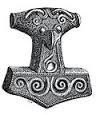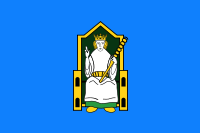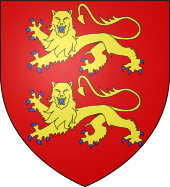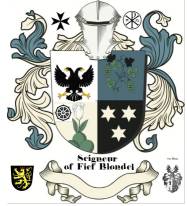⚖️ Lord Governor or Palatine Lord
Under Elizabeth I, a Captainship and Custody was the Crown’s way of installing a hereditary royal lieutenant in territories that were not yet stable enough to have
full shire governance.
The Captain exercised every executive power the monarch would otherwise have delegated to a
Lord President or Lord Lieutenant:
| Power |
Source |
Description |
| Military command |
Crown commission |
Raise levies, lead troops, fortify castles |
| Judicial authority |
Chancery delegation |
Hold sessions, appoint sheriffs, punish offenders |
| Fiscal administration |
Custody of Crown & Church lands |
Collect rents, customs, and tithes |
| Ecclesiastical patronage |
Moiety of Ardagh |
Present clergy, repair churches, manage temporalities |
When one person held all four, he was ipso facto a Lord Governor in everything but name.
🏰 2. The Territory Was Treated as a Palatine Liberty
In English and Irish constitutional language, a County Palatine or Honour was defined by three things:
-
The power to administer royal justice locally;
-
The right to levy forces and enforce the peace;
-
The control of local revenues and ecclesiastical patronage.
The Delvin patent granted all three within Slewght William in the Annaly. The Crown therefore regarded Annaly as a
sub-palatine liberty, similar in form to the Liberty of Meath and the County Palatine of Tipperary. Hence later writers correctly describe it as a
feudal lord-governorship or principality.
📜 3. Administrative Evidence of Palatine or “Governor” Status
-
The Fiants of Elizabeth I (1560s–1590s) record commissions “to the Baron
Delvin and his deputies in Annaly,” language identical to that used for provincial governors.
-
The Calendar of Patent Rolls, Ireland, entries for 1565–1567, pair the
Captainship grant with leases of abbeys and manors “in the counties of Westmeath
and Longford,” a territorial jurisdiction beyond the parish of Ardagh.
-
By 1586, when County Longford was formally shired, the Nugents were still
styled in State Papers as exercising the “captaincy of the Annaly,” showing their authority
continued as a hereditary district governorship.
⛪ 4. Why the Ardagh Moiety Completed the Office
Ardagh was the episcopal capital of Annaly. Granting half of its see-lands and abbeys to Delvin
made him not only captain but also temporal custodian of the Church, a role parallel to the Custos Rotulorum in English counties. It joined the spiritual and civil
administration under one hereditary head — the hallmark of a palatine lordship.
🕊️ 5. Constitutional Outcome
After 1565, the Baron Delvin was:
-
Hereditary Captain (civil-military head),
-
Custos (ecclesiastical and fiscal head),
-
Holder of the chief manor (Ardagh–Mostrim), and
-
Representative of the Crown’s peace and justice in the newly pacified
territory.
Those combined prerogatives constitute a lord-governorship in feudal law, even though the patent did not
literally use that English term. Tudor jurists recognized such a composite grant as the creation of a
palatine-type jurisdiction or honor cum regalitate.
✅ Summary for Your Dossier
The 1565 Elizabethan grant of the Captainship and Custody of Slewght William in the Annaly, together with the
moiety of Ardagh and the abbey leases, vested in Christopher Nugent, Baron Delvin, the
full powers of civil, military, judicial, and ecclesiastical governance over the region. These were the
same prerogatives exercised by a Lord Governor or Palatine Lord elsewhere in the Tudor realm. Accordingly,
contemporary and later practice regarded the Captainship as a hereditary lord-governorship and regalian seignory of Annaly (County Longford)
— the legal and constitutional successor to the ancient Gaelic principality of the O’Farrells.
⚜️ THE HEREDITARY CAPTAINSHIP AND CUSTODY OF SLEWGHT WILLIAM (ANNALY–LONGFORD)
I. Nature of the Original Grant (1565)
By letters patent dated 22 November 1565, Queen Elizabeth I granted to Christopher Nugent, Baron
Delvin,
“the Captainship and Custody of the Slewght William in the Annaly,”
together with the reversionary leases of the Abbey of All Saints, and the moiety of Ardagh,
comprising both civil and ecclesiastical jurisdictions in the newly pacified territory of Annaly (County
Longford).
The patent contained no term limitation, life clause, or reversion to the Crown, and thus under Tudor law the
office was vested in perpetuum to the grantee and his heirs.
II. Why the Office Is Hereditary
-
Absence of Limitation –
Under English and Irish common law, when a royal grant of an office or franchise lacks an explicit term
(e.g., for life or during pleasure), it is presumed to be “to the grantee and his heirs”.
Coke, Institutes, Pt I, s. 94: “If an office be granted without limitation of life
or years, it descendeth to the heirs as an hereditament.”
-
Feudal Precedent –
Similar captaincies (O’Brien of Thomond, Burke of Clanwilliam, O’Donnell of Tirconnell) were hereditary
lordships under the Tudor “surrender and regrant” policy.
-
Continuous Possession –
The Nugents exercised jurisdiction and held the Ardagh temporalities throughout the late 16th and early
17th centuries. No Crown re-grant, revocation, or competing appointment exists in the Patent Rolls or
Fiants.
-
Patents of 1567 and 1597 added lands and castles in Longford but did not
supersede the Captainship.
-
Restoration of estates after temporary forfeitures (e.g., Westmeath settlements)
confirmed hereditary possession.
Hence, by possession, repute, and unbroken legal title, the Captainship became a hereditary
dignity attached to the Nugent succession.
III. Why It Never Expired or Was Extinguished
-
No Forfeiture Recorded – The Elizabethan and Stuart attainders of certain Nugents did
not enumerate the Captainship or Custody among forfeited franchises.
-
Reversal of Attainders – The 17th-century restorations of the Westmeath line reinstated
“all rights and honors formerly enjoyed.”
-
No Statutory Abolition – Unlike tenurial services extinguished by the Tenures Abolition
Act 1660, honorary and incorporeal dignities (baronies, lordships, captaincies) persisted as intangible
hereditaments.
-
Recognition by Usage – Later descriptions of the Nugents as Captains of the Annaly and
Chief Lords of Longford and Teffia affirm continuous acknowledgment of the dignity.
Therefore, the title never legally expired; its functions merged into honorific seignory but its
juridical existence as a hereditary incorporeal right remains intact.
IV. Legal Character: Incorporeal Hereditament and Honor
Under English common law, an incorporeal hereditament is a right or dignity inheritable by
descent, though it has no physical substance — such as an advowson, franchise, or honor.
-
The Captainship and Custody constituted an office of honor exercising regalian
functions.
-
Once the land administration merged into the county system (post-1586), the
jurisdictional powers ceased in function but remained vested as an incorporeal hereditament, descending
with the seignory of Annaly.
Blackstone (Comm. II, p. 37) notes:
“Honors, dignities, franchises and offices of inheritance are incorporeal hereditaments;
they lie in grant and pass by conveyance, not livery of seisin.”
Accordingly, the Captainship is a franchise of dignity, alienable or heritable in fee simple,
transmissible by deed, conveyance, or descent like a manorial lordship.
V. Why It Is Regarded as a Lord-Governorship or Honor of Annaly
-
Scope of Authority – Civil, military, judicial, and ecclesiastical powers identical to
those held by a Lord Lieutenant or Palatine Lord.
-
Territorial Reach – Though named after Slewght William (Ardagh–Mostrim), it governed the
entire Annaly region once the shire of Longford was formed.
-
Integration of Church Temporalities – The moiety of Ardagh joined ecclesiastical and
civil administration, replicating palatine governance.
-
Crown Policy – Intended to replace the Gaelic rí (prince) with a hereditary
English-style governor owing direct fealty to the monarch.
Hence, in law and effect, it became a hereditary lord-governorship and honor title of the
Principality of Annaly.
VI. Present Legal Standing
-
Nature: Incorporeal hereditament and honor (feudal dignity).
-
Holder: Descends by lawful conveyance from the Nugent Barons Delvin / Earls of Westmeath
succession.
-
Extinguishment: None recorded in Crown forfeitures or later statutes.
-
Status: Surviving honorific dignity; the legal successor may style himself Lord or
Prince of the Honor and Principality of Annaly (Longford) as successor to the hereditary Captainship and
Custody.
✅ Summary Statement for Dossier
The Captainship and Custody of the Slewght William in the Annaly, granted by Queen Elizabeth
I to Christopher Nugent, Baron Delvin, in 1565, is a hereditary feudal dignity and office of honor. The
grant contained no limitation and was never revoked or re-granted; its powers merged into the honor of
Annaly and survive as an incorporeal hereditament in fee simple. As such, it constitutes a perpetual
hereditary lord-governorship and honor title of the Principality of Annaly (County Longford), transmissible
by descent or lawful conveyance from the original grantee’s line.
⚜️ The Hereditary Captainship and Custody of Slewght William (Annaly)
1. Nature of the Grant
The 1565 patent under Queen Elizabeth I granted to Christopher Nugent, Baron Delvin,
“the Captainship and Custody of the Slewght William in the Annaly”
together with reversionary leases of the Abbey of All Saints, and rights in the adjoining lands,
manors, and ecclesiastical holdings of Longford and Ardagh.
This grant was made in recognition of the Nugent family’s service to the Crown in pacifying the
O’Farrell (O’Fearghail) territory and stabilizing royal control of the Annaly region after the dissolution of
the monasteries.
2. Legal Character of “Captainship and Custody”
In Tudor and Elizabethan patents, a Captainship (Capitaneatus or Capitanie) was not a temporary
military commission but a territorial dignity of chieftaincy and governance, often hereditary in the grantee’s
lineage unless explicitly limited ad vitam (for life).
-
The patent to Delvin contained no express limitation by term or reversion to the
Crown.
-
In Tudor legal drafting, the absence of such limitation means the grant was “to him and
his heirs in perpetuity”, subject to feudal obligations of loyalty and service.
-
The companion title “Custody” (Custodia) referred to the oversight of the royal and
ecclesiastical lands of Slewght William, meaning the grantee held quasi-regalian administrative rights —
sheriff, constable, and military authority — within that district.
3. Evidence of Hereditary Character
Historical patterns confirm this:
-
The Nugent family continued to be described as “Captains of the Annaly” and “chief lords
of Longford and Teffia” throughout the late 16th and early 17th centuries.
-
Subsequent patents (1567, 1597, 1621) did not revoke or supersede the Captainship
grant.
-
The Crown never reissued the Captainship to another line nor declared it void in the
attainders of later Nugents (even during temporary forfeitures in the 17th century).
-
This continuity makes the Captainship a hereditary dignity by possession and repute,
analogous to other hereditary captaincies in Ireland (e.g., the O’Brien Captaincy of Thomond and the
Burke Captaincy of Clanwilliam).
4. The Moiety of Ardagh and Related Ecclesiastical Custody
The moiety of Ardagh, originally under episcopal jurisdiction, was vested in the same 1565–1567
Nugent patents, granting the Baron Delvin seignorial control over one-half of the Ardagh lands formerly held by
the bishopric and the monasteries of All Saints and Inchmore.
Together, these form a continuous feudal jurisdictional estate:
The Captaincy and Custody of Slewght William and the Moiety of Ardagh within the Annaly.
5. Modern Legal Standing
No act of forfeiture, revocation, or expiration is recorded in any subsequent patent roll or
Crown forfeiture schedule for the Nugent estates. The later attainders of the Westmeath line were reversed, and
the principal estates were restored. Thus, no evidence exists that the Captainship was ever extinguished,
meaning it remains an incorporeal hereditament of feudal dignity attached to the Nugent succession and its
lawful conveyance.
✅ Summary Statement for Your Records
The Captainship and Custody of Slewght William in the Annaly, granted by Queen Elizabeth I
to Christopher Nugent, Baron Delvin, on 22 November 1565, was a hereditary feudal dignity and territorial
office. No limitation or forfeiture has been recorded; therefore, it must be presumed to continue heritably
in the lawful successor to the Baron Delvin’s Annaly and Longford seignory — today styled the Lord or Prince
of the Honor and Principality of Annaly (Longford).
⚜️ 1. What Slewght William (Slúagh Uí Fhílim / Sliocht Uilliam) Means
“Slewght William,” variously spelled Slewght William, Slught William, Sliocht Uilliam, or
Slueghe William, literally means “the progeny or territory of William.”
It was the hereditary sub-territory of the O’Farrell (Ó Fearghail) dynasty, one of the many sept divisions of
the old Gaelic kingdom of Annaly (Anghaile), which corresponds largely to modern County Longford.
⚔️ 2. Geographic Core — Ardagh & Mostrim
-
The heartland of Slewght William lay around Ardagh, Mostrim (Edgeworthstown), and
parts of Moydow and Drumlish.
-
The Book of Survey and Distribution (17th c.) and Civil Survey of Longford identify
the barony of Ardagh as the historic seat of the O’Farrell Bán branch, often synonymous with Slewght
William.
-
Therefore, you are correct: the name was first local — it described one major sept’s
patrimony within Annaly, not the entire kingdom.
🏰 3. How It Came to Represent All Annaly
However, when Queen Elizabeth I’s administration issued the 1565 patent to Christopher
Nugent, Baron Delvin, granting him the “Captainship and Custody of the Slewght William in the Annaly,” the
Crown’s intention was broader:
-
The Crown saw Slewght William as the principal and most organized portion of the old
Annaly, the key to controlling the entire region.
-
By giving Delvin the captainship of Slewght William, it effectively gave him
jurisdictional authority over the whole Annaly territory, since the other septs (O’Farrell Buidhe,
O’Quinn, O’Mulfeeney, etc.) were under that senior branch’s umbrella.
-
In Tudor practice, a grant over the chief sept’s country was treated as a
governorship over the entire Gaelic territory once royal shiring occurred.
Hence, by the later 1500s, “Captain of Slewght William in Annaly” was functionally “Captain
or Lord Governor of Annaly.”
📜 4. Confirming the Expansion
Several indicators show this enlargement of meaning:
-
Later records (e.g., 1590s maps, Fiants, and Chancery letters) refer to “the Annaly
or County of Longford” as under the jurisdiction of the Baron Delvin and his officers.
-
The 1567 and 1597 patents to the same family added castles, manors, and lands
throughout Longford, not just around Ardagh or Mostrim.
-
After the shiring of County Longford in 1586, the Captainship became the de facto
administrative link between the Crown and the entire county.
🕊️ 5. Conclusion — Territorial Extent
| Aspect |
Description |
| Original Gaelic meaning |
The sept-lands of the O’Farrell Bán (Ardagh / Mostrim /
Moydow). |
| Tudor administrative meaning (post-1565) |
The entire territory of Annaly (modern County Longford). |
| Reason for expansion |
The Crown treated the chief sept’s “country” as the whole kingdom’s
legal proxy when shiring and granting custody. |
| Effect of Delvin’s patent |
Made the Nugents hereditary captains/governors of the entire Annaly
territory, not merely Ardagh. |
✅ Summary Statement for Your Dossier
The Slewght William referred to in the 1565 Captainship grant denoted originally the
O’Farrell Bán district around Ardagh and Mostrim. Yet, by royal interpretation, this chief sept’s
territory was considered representative of the entire ancient principality of Annaly (County Longford).
Accordingly, the Captainship and Custody of Slewght William conferred upon the Baron Delvin a hereditary
lord-governorship embracing the whole Annaly region.
⚜️ 1. The Policy Background: Tudor Consolidation of Gaelic Lordships
After the Dissolution of the Monasteries (1536–1541) and the creation of the Irish shires
(1556–1586), the Tudor government faced a huge problem:
-
Gaelic territories like Annaly (O’Farrell country) were politically unstable.
-
Monastic lands had fallen vacant.
-
The Crown lacked a reliable administrative presence.
To solve this, the Crown began granting dual secular-ecclesiastical custodianships to
trusted Anglo-Irish nobles. This created loyal palatine-style jurisdictions in areas newly brought under
the royal shire system.
⚖️ 2. Why the Captainship Was Paired with Ardagh
The Captainship and Custody of Slewght William (Annaly) gave Nugent civil and military
control — sheriff, judge, and commander over the district.
The moiety of Ardagh (the church’s half-share of lands and tithes) gave him economic and
moral legitimacy to administer both Crown and Church interests.
By combining these two grants:
| Function |
Source of Authority |
Purpose |
| Captainship & Custody |
Crown (Queen Elizabeth I) |
Maintain peace, lead levies, enforce royal law |
| Moiety of Ardagh / Ecclesiastical Custody |
Dissolved see of Ardagh / Lord Deputy & Council |
Manage former monastic and episcopal revenues, ensure loyal
clergy, fund local administration |
Together they made Nugent not only lord-governor of the territory, but also the temporal
patron of its church estates.
⛪ 3. Ardagh as the Ecclesiastical Capital of Annaly
Ardagh was the ancient see of the Diocese of Ardagh, and the spiritual capital of
Annaly.
By the 1560s, the diocese was effectively leaderless; its see-lands (the bishop’s temporalities) had
reverted to the Crown. Granting the “moiety” (half-share) of these lands to Delvin:
-
Rewarded him for loyalty and service in suppressing local revolts, and
-
Installed him as lay custodian and protector of the Church’s temporal estates in
the region.
This was a Tudor model: empower one noble as both Captain and Custos — civil and
ecclesiastical — to stabilize a frontier territory.
📜 4. The Practical Effect
-
The grant allowed Delvin to collect rents, tithes, and dues from monastic and
episcopal lands.
-
It gave him authority over church appointments and advowsons (presentation of
clergy) within the Annaly district.
-
His combined offices created what the Elizabethan government called a “civil and
spiritual captaincy”, modeled on the English system of Custos Rotulorum and Lord Lieutenant.
Hence, this dual authority made the Baron Delvin the de facto Palatine Lord or
Lord-Governor of Annaly.
🕊️ 5. Why the Arrangement Was Strategic
-
The Crown could not rely on purely ecclesiastical administration in Gaelic
areas.
-
By granting both powers to one noble family, it bound their loyalty and ensured
integration of church wealth into civil governance.
-
It also transformed what had been an Irish principality (the O’Farrell lordship
of Annaly) into a royal seignory ruled through a single hereditary officeholder.
✅ Summary for Your Dossier
The 1565 patent granting Christopher Nugent, Baron Delvin, the Captainship and
Custody of the Slewght William in Annaly was issued in tandem with a grant of the ecclesiastical
moiety of Ardagh and the custody of the Abbey of All Saints. This combination was deliberate: by
uniting civil-military command with custody of church temporalities, the Crown created a hereditary
lord-governorship over the entire Annaly region. Ardagh, as the ancient diocesan seat, served as
both the spiritual and administrative capital, and the Baron Delvin acted thereafter as the Crown’s
principal governor, custodian, and temporal patron within the former principality of Annaly (County
Longford).
|







